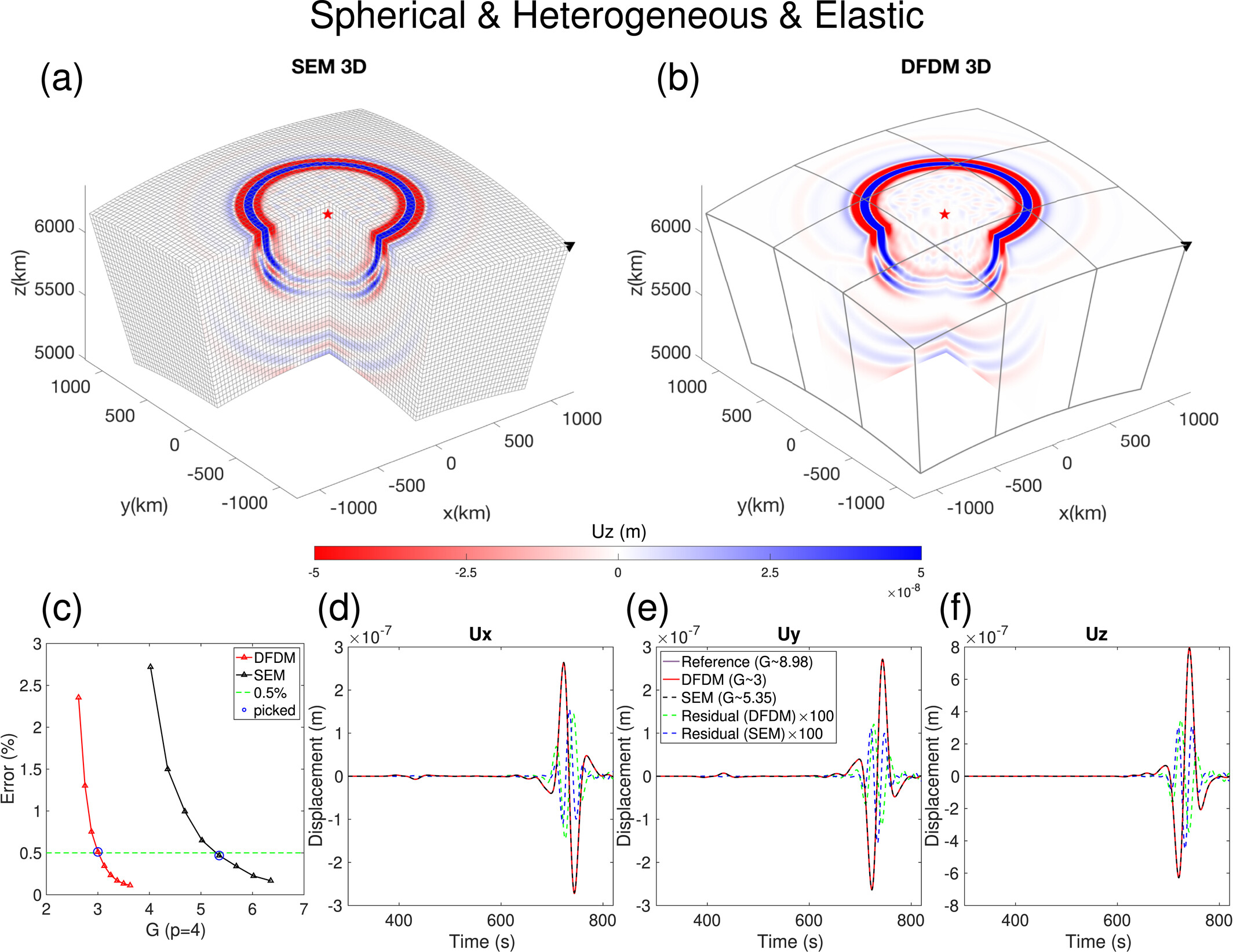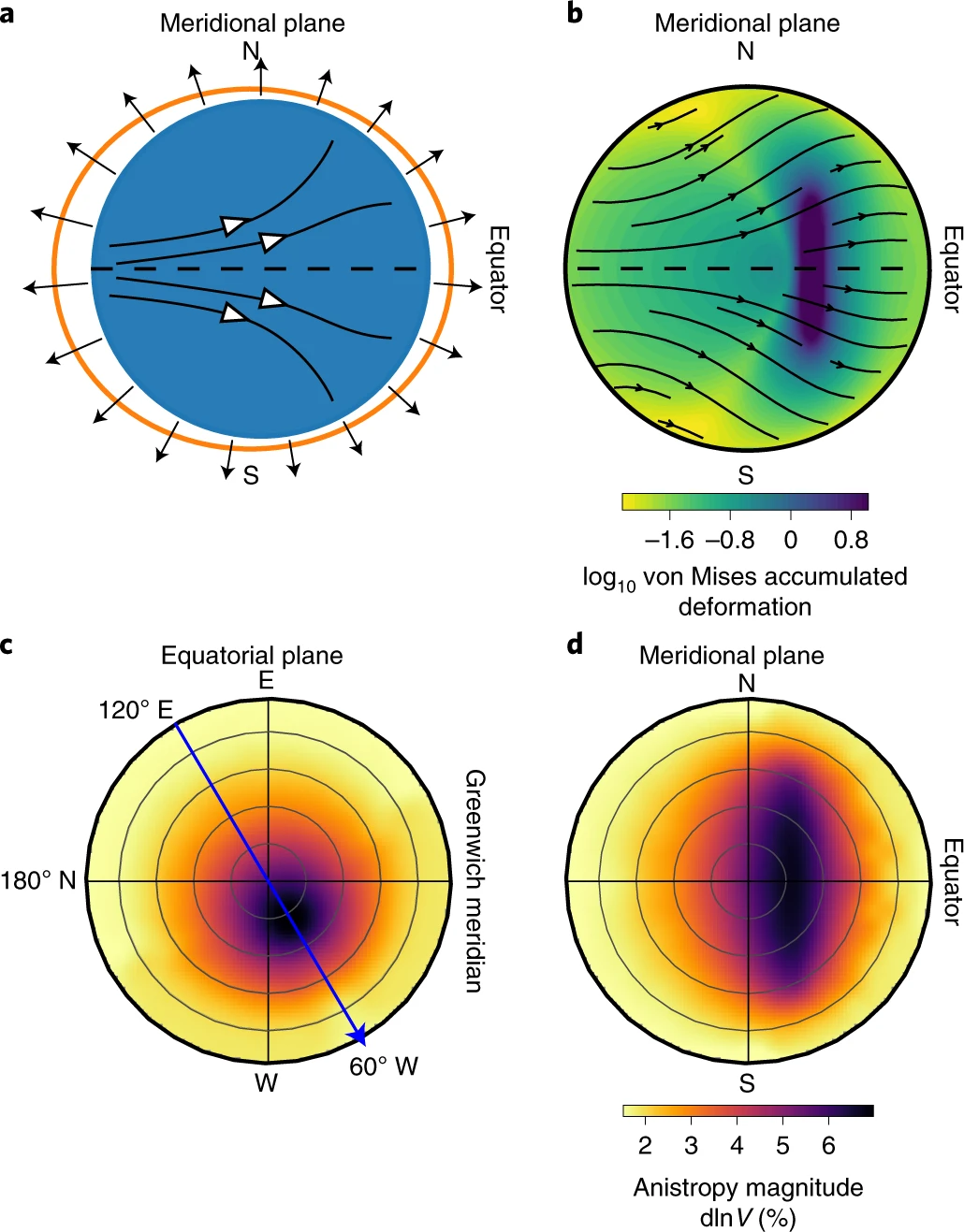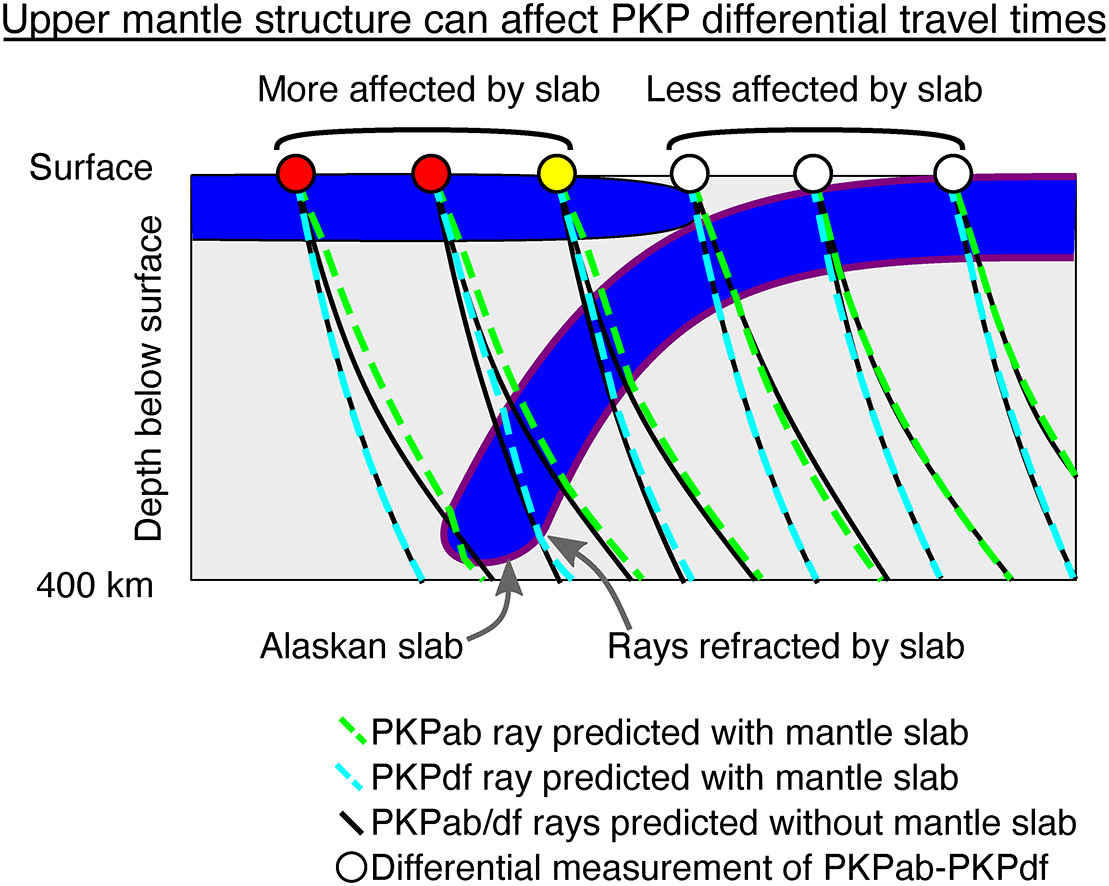Array measurements of inner core waves in Alaska show perturbations in direction and travel time by the subducted Pacific plate
Based on the PKPdf observations and our new tomography model of the upper mantle beneath Alaska, we conclude that at least 2 s of the travel time anomaly often attributed to inner core anisotropy is due to slab effects in the upper mantle beneath Alaska
Abstract
Observations of travel time anomalies of inner core-sensitive PKPdf seismic body waves, as a function of path orientation with respect to the earth’s rotation axis, have been interpreted as evidence of anisotropy in the inner core. Paths from earthquakes in the South Sandwich Islands to stations in Alaska show strongly anomalous travel times, with a large spread that is not compatible with simple models of anisotropy. Here we assess the impact of strong velocity heterogeneity under Alaska on the travel times, directions of arrival and amplitudes of PKPdf. We use 3D ray-tracing and 2.5D waveform modelling through a new, high-resolution tomography model of the upper mantle beneath Alaska. We find that the structure beneath Alaska, notably the subducting slab, is reflected in the patterns of these PKPdf observations, and this can be replicated by our model. We also find similar patterns in observed teleseismic P waves that can likewise be explained by our slab model. We conclude that at least 2 s of the travel time anomaly often attributed to inner core anisotropy is due to slab effects in the upper mantle beneath Alaska.
Download
Download the paper here



